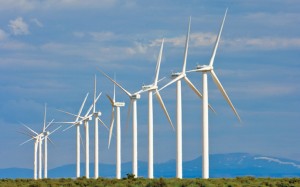 The intermittent nature of renewables like wind and solar require grid operators to balance these resources without increasing costs and pollution from fossil fuel-based power. There are three main ways to do this: the first is energy storage, to store surplus solar and wind energy for nighttime or windless days. The second is demand response, or flexiwatts, to moderate demand based on renewable availability.
The intermittent nature of renewables like wind and solar require grid operators to balance these resources without increasing costs and pollution from fossil fuel-based power. There are three main ways to do this: the first is energy storage, to store surplus solar and wind energy for nighttime or windless days. The second is demand response, or flexiwatts, to moderate demand based on renewable availability.
But the less-discussed third option for states like California is to harness renewables from across the west.
James Bushnell (Energy Institute at Haas) and Benjamin Hobbs (Johns Hopkins University) describe the benefits of California expanding its “energy imbalance market” to cover renewables in other states. While some fret that the expansion could create governance headaches and possibly open the door to California importing dirty out-of-state coal power, they knock down these arguments and also discuss the huge benefits of an export market for California’s renewables:
There are triple benefits to being able to more easily export this excess power. First, it will actually lower costs for Californians by improving the efficiency of those other plants. Second, it will lower costs for other states because they can reduce output from their conventional plants. Third, air pollution and greenhouse gas emissions will go down because California plants will operate more efficiently while plants elsewhere will operate less.
The state is overdue for integrating its grid into the west in this way, and it’s encouraging to see California’s grid operator take steps to launch the expanding market.
Leave a Reply
You must be logged in to post a comment.


